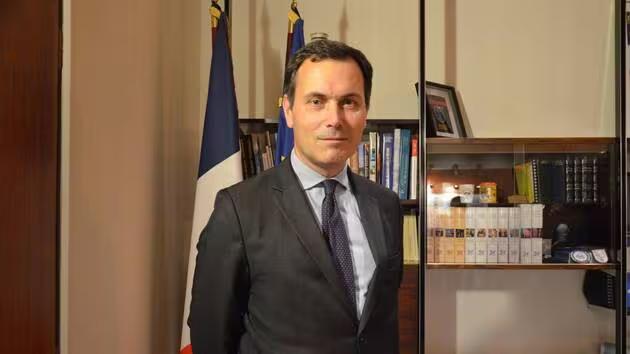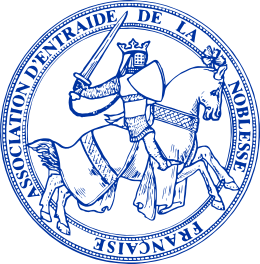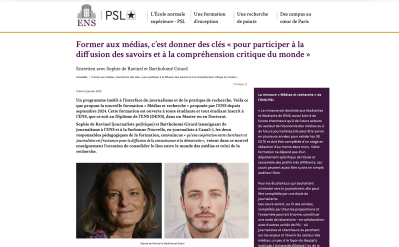News

Ouest France: "Georges de Keréver, the great-grandfather of the Côtes-d'Armor prefect, photographed Saint-Brieuc".
Georges de Keréver, grandfather of the new prefect, photographed pre-First World War Brittany. This rich collection was acquired by the town of Saint-Brieuc in 1992.

Georges de Keréver was a regular at horse races. Here, on La Grève des Courses, in Saint-Brieuc, at the beginning of the 20th century. | FONDS GEORGES DE KERÉVER
Who was Georges de Keréver, born in Château-Bily, Ploufragan? Who was this man who lived in a beautiful mansion on rue des Capucins in Saint-Brieuc, known as the Hôtel de Keréver? In 2009, Le Griffon, the municipal newspaper of the prefecture town, described him as a " gentleman farmer with a passion for photography " on the occasion of an exhibition at the museum. Around a hundred photos have been brought to light to show the public the wealth of Georges de Keréver's photographic collection, comprising 1,200 glass plates.
" A snapshot of local life
In 1992, the town of Saint-Brieuc acquired this collection for 30,000 francs," explains Nicolas Poulain, head of collections at the Saint-Brieuc museum. It's not an insignificant sum. His legacy is a form of social fresco from before the First World War. It's a period where we don't have much iconography," contextualizes Nicolas Poulain, comparing it to the other collections on hand. It's a snapshot of local life. Trégorrois farmers, walks in Brittany, scenes
of daily life, religious celebrations, posh weddings, landscapes, clog makers, horse races... The photographer did not confine himself to the events of his family life. He also captured his travels in Italy and England.
Georges de Keréver, landowner of several farms between Morlaix (birthplace of the Guillotou de Keréver family) and Saint-Brieuc, was a notable figure who practiced photography as an enlightened amateur. With exacting standards," emphasizes Nicolas Poulain. He's a connoisseur. He masters a technical know-how and uses two or three cameras. The glass plates are of the highest quality.
With his camera always at hand between 1904 and 1914, Georges de Keréver immortalized the world in which he lived. He took an interest in the people, his gaze, capturing the moment. Georges de Keréver, grandfather of the new prefect, photographed Brittany before the First World War. This rich collection was acquired by the town of Saint-Brieuc in 1992.
The prefect's great-grandfather, an enlightened photographer
The composition is masterful. You could call it reportage. His photos paint a picture of early 20th-century society. In his fifties, Georges de Keréver, who was president of the Société des courses de Saint-Brieuc and many other organizations, gave up the art of photography.
" A gentle, caring look
" It's a well-documented collection," says Nicolas Poulain. Behind it lies " the history of costumes, professional practices and local traditions ". All the photos, now in the public domain, have been digitized and will be available online from 2021. This facilitates access.
And to think that these glass plates had been forgotten in a crate in the corner of an attic. It was his grandson, who bears the same name (and therefore father of the new prefect), who unveiled this treasure, before handing it over to the town of Saint-Brieuc for safekeeping. The Brittany of yesteryear, under the seal of Georges de Keréver, remains topical. " We get regular requests, especially from schools," says Nicolas Poulain.
Artists are also tapping into these resources, such as, most recently, Brioche photographer Marynn Gallerne, " fascinated " by his work and " his gentle, benevolent look at people, high society and peasants alike". The artist has taken " several hundred images, which have been mounted on a wall at the Villa Rohannec'h in Saint-Brieuc ". The result could be seen during the recent Heritage Days. More than a century later, Georges de Keréver's work lives on.
François de Keréver's dual roots in Côtes-d'Armor

François de Keréver is the new Prefect of Côtes-d'Armor. Pictured here in his office in Saint-Brieuc. | OUEST-FRANCE
Since taking office on November 11, Prefect François de Keréver has been familiarizing himself with the Côtes d'Armor region. Born in Orne, the 50-year-old former Outre-mer advisor to Emmanuel Macron spent his childhood between Paris and Saint-Brieuc. Meeting with farmers, accompanying Red Cross volunteers on marauding missions... The senior civil servant has a busy schedule.
By being appointed to Saint-Brieuc, the Prefect is reconnecting with his family history in two ways.
Firstly on his paternal side, but also on his maternal. He is the grandson of Jacques Pâris de Bollardière, who was born in Châteaubriant (Loire-Atlantique) in 1907 and died in Guidel (Morbihan) in 1986. After taking a stand against torture during the Algerian war in 1957, the general went on to become a tireless campaigner for non-violence.
" A family originally from Finistère ".
History also records that he was the most decorated soldier in Free France. He was " a valiant Resistance fighter ", testified Armelle Bothorel, one of his five daughters, in 2022. The former Socialist mayor of La Méaugon, between 2001 and 2020, is his aunt. The former mayor, who is no longer in office, was also president of the Saint-Brieuc agglomeration from 2012 to 2014, and head of the Association des maires de France des Côtes-d'Armor. Contacted, the prefect remains discreet about his family ties in the area. " The de Keréver family is originally from Finistère, and several of its members have lived in the Côtes-d'Armor region," says the prefecture.
Is it incompatible to be appointed in a department where links exist? No, says the Ministry of the Interior, pointing to the decree of April 6, 2022 on the posts of prefect and sub-prefect, " which explicitly provides for certain incompatibilities ".
Essentially, a prefect or sub-prefect may not serve in the department or attached region for two years after leaving office. And people who have worked for a local authority, region or other public grouping may not hold a job as a prefect or sub-prefect in the same department or region, also within a two-year period.
Read the article on www.ouest-france.fr
By Soizic Quéro
Published November 23, 2024









